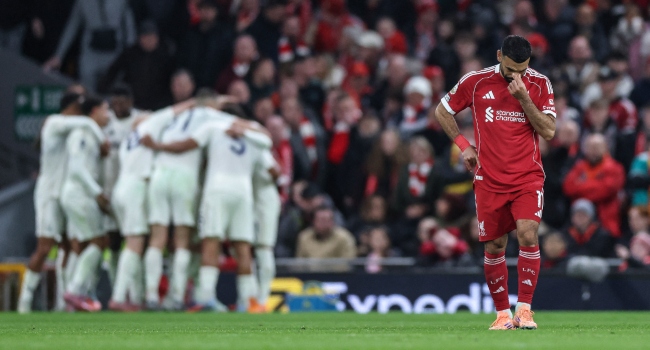The new Premier League campaign has kicked off with a crowded calendar, fresh faces from the Championship, and managers experimenting with shapes that blur the line between full-back and midfielder.
For punters and fans alike, it’s a season that rewards preparation: knowing when squads will be stretched, who’s chasing the last Champions League ticket, and how tactical patterns tilt matchups.
If you track football tips from FIRST, you’ll already be looking at schedule clusters, injury risk around international windows, and how evolving systems change shot quality and set-piece value.
The promoted trio—Leeds United, Burnley, and Sunderland—join the 17 holdovers, replacing Southampton, Leicester City, and Ipswich Town, while the season itself began over the weekend of August 15–18.
The fight for the top four
Intro. With UEFA’s revamped Champions League format, England sometimes lands an extra berth via the “European Performance Spot” (EPS). That happened last spring, when five Premier League clubs—Liverpool, Arsenal, Manchester City, Newcastle and Chelsea—qualified for the 2025/26 league phase. Whether England earns that fifth ticket again for 2026/27 depends on this season’s European results, so the default chase is back to a fierce top-four battle among Liverpool, Arsenal, City, Chelsea, Newcastle, Spurs, United and Aston Villa. Expect a three-team title axis and a very noisy fight just beneath it.
Contenders at a glance (form, edges, and hazards).
- Liverpool. A high-possession model with hybrid full-backs remains central under Arne Slot, keeping shot volume stable even when forwards rotate. Title ceiling intact; fixture congestion from Europe is the main throttle.
- Arsenal. The most consistent box-midfield in England last year, toggling between 3-2-4-1 and 2-3-5 shapes. Their on-ball control protects leads but can be vulnerable to fast diagonal transitions behind inverting full-backs.
- Manchester City. Still the league’s benchmark for rest-defence and game-state control. Personnel refresh has shifted the shape at times, but the principles—positional play and five-lane occupation—remain.
- Chelsea. Heavy recruitment continued and the squad is deeper; the question is week-to-week coherence when Europe and domestic cups stack up. A top-four push hinges on stabilising their off-ball distances.
- Newcastle United. Last season’s EPS beneficiary. Their top-four case is built on set-play output and transition efficiency; watch how European midweeks affect late-winter league points.
- Tottenham Hotspur. Chance creation is strong, but maintaining defensive compactness against elite ball-circulation teams is the swing factor in six-pointers.
- Manchester United. Big-club volatility: ceiling games against top rivals, but they must stabilise first-phase build-up under pressure to stay in the mix.
- Aston Villa. Strong in set-pieces and wide overloads; depth across three competitions will decide whether they punch into the top four or hover just under.
Wrap-up. The difference between third and sixth may come down to squad retention through the winter: AFCON absences, the festive crunch, and how quickly teams exiting Europe re-find a one-match-per-week rhythm. The EPS could again open a fifth door, but nobody can bank on it from August; the safe assumption is a knife-edge race for four seats at Europe’s top table.
Tactical trends shaping 2025/26 — and the key “tours” of the season
Intro. If last year normalised the “box” in midfield, this year it’s practically a league-wide language. Arsenal, Liverpool and others toggle between a 3-2-4-1 and a 2-3-5 on the ball, often via an inverting full-back who steps inside to create an extra passer. The benefits are clear—control, rest-defence and central overloads—but rivals increasingly target the vacated wide channels with quick diagonals. Expect more games decided by which side better protects its weak-side wing when the full-back moves infield.
Key Tours of the Season: Dates and Performance Insights
| Window / Matchweek | What’s happening | Why it matters for bettors |
| Opening weekend (Aug 15–18) | Liverpool–Bournemouth opened the season; Chelsea–Palace, United–Arsenal and Leeds–Everton filled a high-profile slate. | Opening data points are noisy; new-manager tactics and post-Club-World-Cup fatigue can swing early lines—avoid over-weighting one match of evidence. |
| Transfer deadline (Sep 1) | Final squad moves lock depth charts. | Late signings rarely start immediately; look for undervalued unders on teams integrating key pieces away from home. |
| Derby cluster (mid-Sep to late Oct) | Early Liverpool–United and City–United tests arrive before European group stages bite hard. | Six-pointers compress expected goals: rivals often flatten risk early; corners and set-pieces rise in value. |
| Festive period (Dec 27 & Dec 30 rounds) | Two matchweeks inside four days. | Rotation spikes; models that account for bench strength and travel distance outperform broad form tables. |
| AFCON window (Dec 21–Jan 18) | Morocco hosts AFCON 2025. Several PL squads lose starters. | Price swings can lag reality. Track actual call-ups, not assumptions; wide players and No.6 absences hit build-up and defensive transition the most. |
| Spring run-in (late April–May) | MW34–MW38 often decides European places; final day is May 24, 2026. | Motivation premium is real, but beware dead-rubber traps; mid-table sides with contract auditions can upset favourites. |
Dates and fixtures are from the official Premier League release; AFCON timing confirmed by CAF.
Wrap-up. Tactically, the key test is who can keep the benefits of the box midfield without exposing the far side—especially during the festive sprint and AFCON absences. Teams that manage rest-defence and set-piece detail across those spikes will bank points when others wobble.
What the calendar and tactics mean for top-four bettors
The schedule cadence and stylistic shifts interact in ways that shape value:
- Edges come in clusters. The festive double-gameweek (Dec 27 & 30) and the AFCON window tend to compress matches for European contenders. That’s when squad depth and youth minutes suddenly matter more than star power. Liverpool, Arsenal and City have built systems to sustain high possession while rotating; the question for Chelsea and Newcastle is whether their second units protect defensive transitions with the same composure as the starters.
- Box-midfield vs. direct break. When a favourite’s full-back steps inside, underdogs with fast wide outlets gain outsized threat. Those fixtures can produce lower shot totals but higher “big chance” share for the underdog—a setup that narrows score-line variance and keeps draws live longer.
- EPS is a bonus, not a plan. England’s fifth UCL spot in 2025/26 came via Europe’s seasonal coefficient and went to Newcastle; it might happen again, but the smarter posture is to handicap the race as four seats—because that’s what teams must lock in on the pitch from August to May.
Bottom line for the 2025/26 layout
This season’s plotlines are tightly interwoven: a title race with three familiar heavyweights; a chasing pack deep enough to turn the top-four cut-line into a weekly referendum; and tactical trends that reward teams who can switch between a compact 4-4-2 out of possession and a 3-2-4-1 on the ball without losing the wings. If you’re pricing outrights or match-to-match angles, let the calendar drive your risk: target the festive squeeze, map AFCON call-ups, and respect how modern shapes change chance quality. Everything else is noise; the margins in this top-four chase are razor-thin, and that’s exactly where the smart bets live.





